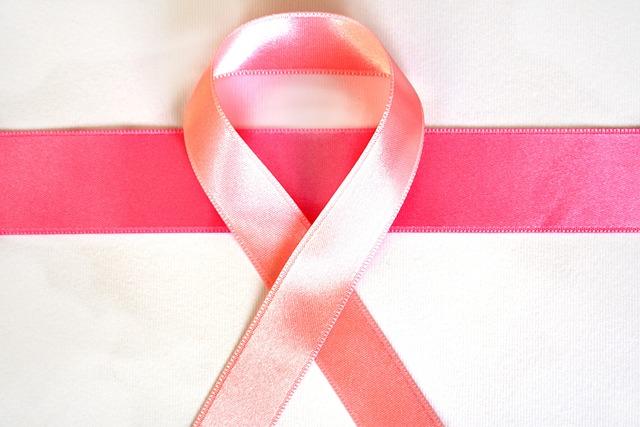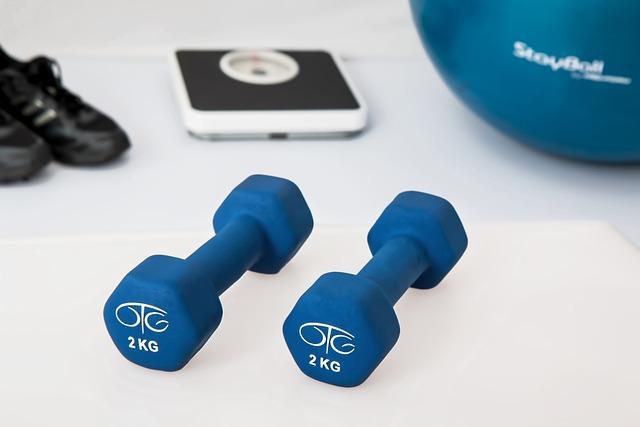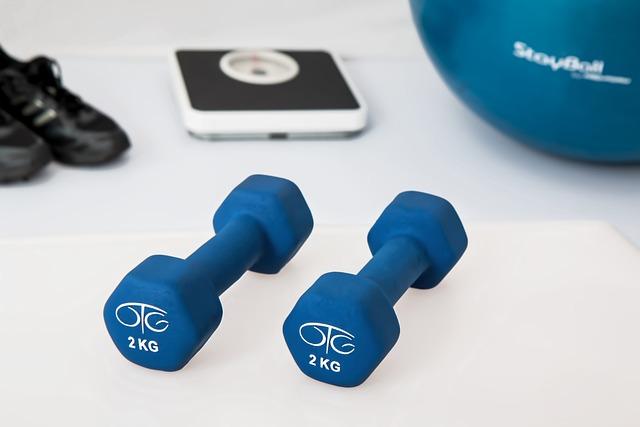What Is Breast Hypertrophy? Understanding Breast Health

Breast Hypertrophy: Understanding Breast Health
When it comes to breast health, it’s crucial to be aware of the various conditions that can impact our well-being. One such condition that often goes unnoticed is breast hypertrophy. Though the term may sound unfamiliar, understanding it is essential for every woman. In this informative article, we dive deep into the world of breast hypertrophy to reveal its causes, symptoms, and available treatments. Join us as we unravel the mysteries surrounding this condition and empower ourselves with knowledge for better breast health.
Contents
- 1. The Science Behind Breast Hypertrophy: An In-depth Look at What Causes This Condition
- 2. Signs and Symptoms of Breast Hypertrophy: How to Recognize When There’s a Problem
- 3. Understanding the Impact of Breast Hypertrophy on Mental and Physical Health
- 4. A Comprehensive Guide to Diagnosing Breast Hypertrophy: Medical Tests and Examinations
- 5. Treatment Options for Breast Hypertrophy: Exploring Surgical and Non-Surgical Interventions
- 7. Supporting Breast Health: Holistic Approaches to Preventing Hypertrophy and Promoting Balance
1. The Science Behind Breast Hypertrophy: An In-depth Look at What Causes This Condition
Breast hypertrophy is a condition characterized by an excessive growth of breast tissue, resulting in larger than average breasts. While many associate this condition with purely cosmetic concerns, it is important to recognize that breast hypertrophy can have physical and psychological implications for individuals affected by it.
-
Causes of Breast Hypertrophy:
- Hormonal Imbalance: Fluctuations in estrogen levels can lead to an overdevelopment of breast tissue.
- Genetic Predisposition: Some individuals may inherit a tendency for breast hypertrophy from their parents.
- Weight Gain: Excessive weight gain can contribute to an increase in breast size.
- Pregnancy and Breastfeeding: Hormonal changes during these stages can cause temporary breast enlargement. However, for some women, the breasts may not return to their original size afterwards.
- Certain Medical Conditions: Conditions such as gigantomastia or macromastia can result in extreme breast hypertrophy.
- Physical and Psychological Effects:
- Back, neck, and shoulder pain: The weight of large breasts can strain the muscles in these areas, causing discomfort and chronic pain.
- Poor posture: Individuals with breast hypertrophy may find it challenging to maintain good posture due to the weight and size of their breasts.
- Negative self-image: Many affected individuals may experience body image insecurities, leading to a decrease in self-confidence and a negative impact on their mental well-being.
- Limitations in physical activity: Engaging in sports or exercise may be hindered by the excessive weight and movement of the breasts.
Understanding the underlying science behind breast hypertrophy is crucial in addressing the concerns associated with this condition. It is important to consult with healthcare professionals to evaluate and explore suitable treatment options for individuals struggling with breast hypertrophy. Remember, breast health goes beyond aesthetics and encompasses overall well-being.
2. Signs and Symptoms of Breast Hypertrophy: How to Recognize When There’s a Problem
Breast hypertrophy, also known as macromastia, is a condition characterized by an abnormal and excessive growth of breast tissue. It can affect both women and men, although it is more common in women. This condition can cause significant physical and emotional discomfort, as well as affect a person’s quality of life.
Here are some signs and symptoms that may indicate breast hypertrophy:
-
Excessive breast growth: One of the most prominent signs of breast hypertrophy is a noticeable increase in the size and weight of the breasts. This growth is often disproportionate to the rest of the body and may cause discomfort or pain.
-
Back, neck, and shoulder pain: The excess weight of the enlarged breasts can strain the muscles and ligaments in the back, neck, and shoulders, leading to persistent pain and discomfort.
-
Posture problems: Breast hypertrophy can impact posture by pulling the shoulders forward and causing rounding of the upper back. This can lead to poor posture and potential spinal issues over time.
- Skin irritation: The excessive breast tissue can create skin folds and creases, which may result in skin rashes, irritation, and infections. It is essential to keep the area clean and dry to prevent these issues.
If you experience any of these symptoms, it is crucial to consult with a healthcare professional for an accurate diagnosis. They may recommend further tests or imaging to determine the extent of the hypertrophy and develop a suitable treatment plan tailored to your specific needs. Remember, early detection and proper management are key to maintaining breast health.
3. Understanding the Impact of Breast Hypertrophy on Mental and Physical Health
Breast hypertrophy, also known as macromastia, is a medical condition characterized by an abnormal enlargement of the breasts. This condition can affect women of all ages and can have a significant impact on both their mental and physical health. Understanding the impact of breast hypertrophy is crucial in order to provide appropriate support and treatment for those affected.
Physically, breast hypertrophy can lead to a range of symptoms and complications. These may include chronic pain in the neck, shoulders, and back, as well as difficulty finding well-fitting bras and clothing. For some women, the excessive weight of their breasts can also cause poor posture and even skin problems, such as rashes and irritation. It is important to note that breast hypertrophy can vary in severity, with some women experiencing mild enlargement and others facing extreme challenges in their daily lives.
Beyond the physical burden, breast hypertrophy can also have a profound impact on mental health. Many women with this condition experience feelings of self-consciousness, low self-esteem, and even depression. It can be emotionally challenging to constantly attract unwanted attention or struggle with body image issues. Seeking support from healthcare professionals, friends, and family can be invaluable for those dealing with the mental toll of breast hypertrophy.
Overall, is crucial for both individuals and healthcare providers. By recognizing the challenges faced by those affected, we can work towards raising awareness, providing necessary support, and establishing effective treatment options to enhance the well-being of people with breast hypertrophy. Remember, everyone’s experience is unique, and treating each case with empathy, understanding, and respect is key.
4. A Comprehensive Guide to Diagnosing Breast Hypertrophy: Medical Tests and Examinations
Breast hypertrophy is a condition characterized by the excessive growth of breast tissue, resulting in larger-than-average breasts. While having larger breasts is often considered desirable by some individuals, breast hypertrophy can lead to physical discomfort, pain, and emotional distress. It is important to understand and maintain breast health to detect any abnormalities early on. Regular breast self-examinations and clinical breast examinations by a healthcare professional are crucial for every woman, regardless of age or breast size.
In order to accurately diagnose breast hypertrophy, medical tests and examinations play a crucial role. These diagnostic procedures help healthcare providers determine the extent of breast tissue growth and identify any associated complications. Some common tests used to diagnose breast hypertrophy include:
-
Imaging tests: These tests, such as mammograms and ultrasounds, provide detailed images of the breast tissue. They can help identify any abnormalities or irregularities in the breast structure.
-
Blood tests: Blood tests may be conducted to check hormone levels, as hormonal imbalances can contribute to breast hypertrophy. Additionally, blood tests can help rule out other underlying medical conditions that may be causing breast growth.
- Biopsy: A biopsy involves the removal of a small sample of breast tissue for microscopic examination. This procedure helps determine whether the breast growth is benign or malignant.
5. Treatment Options for Breast Hypertrophy: Exploring Surgical and Non-Surgical Interventions
Breast hypertrophy is a medical condition characterized by the excessive growth and enlargement of breast tissue. While it can occur in both men and women, it is more commonly found among females. This condition can cause physical discomfort, emotional distress, and hinder an individual’s quality of life. Understanding breast hypertrophy and the available treatment options is crucial for those seeking relief from its symptoms.
There are various treatment options available for breast hypertrophy, ranging from non-surgical interventions to surgical procedures. Non-surgical interventions may include hormonal therapy, which aims to regulate hormone levels and reduce breast tissue growth. Additionally, custom-fitted bras and specialized garments can provide temporary relief by offering support and reducing strain on the breast tissue.
For individuals seeking a more permanent solution, surgical interventions may be considered. One common surgical procedure is breast reduction surgery, also known as reduction mammoplasty. This procedure involves removing excess breast tissue, reshaping and reconstructing the breast to achieve a more proportional size. Another surgical option is breast lift surgery, which is performed to address sagging and drooping breasts, often associated with breast hypertrophy.
It is important to note that the appropriate treatment option for breast hypertrophy may vary depending on the severity of the condition and individual preferences. Consulting with a medical professional specializing in breast health is crucial for an accurate diagnosis and personalized treatment plan. Remember, seeking timely treatment can enhance overall well-being and restore confidence in those affected by breast hypertrophy.
7. Supporting Breast Health: Holistic Approaches to Preventing Hypertrophy and Promoting Balance
Breast hypertrophy, which refers to an excessive growth of breast tissue, can be a cause of concern for many individuals. It can lead to physical discomfort, emotional distress, and may increase the risk of various breast-related issues. However, there are holistic approaches that can help in preventing breast hypertrophy and promoting overall breast health.
-
Maintaining a healthy weight: Excess body fat can contribute to hormonal imbalances, which may worsen breast hypertrophy. By adopting a balanced diet and engaging in regular exercise, we can reduce the risk of excessive breast tissue growth and promote hormonal equilibrium.
-
Wearing a supportive bra: Choosing the right bra can have a significant impact on breast health. A well-fitted and supportive bra can reduce strain on the breast tissues, improve circulation, and prevent sagging. Opt for bras with wide straps and adequate cup sizes to ensure optimal support.
-
Practicing good posture: Poor posture can put unnecessary strain on the breasts, leading to discomfort and potentially exacerbating hypertrophy. Maintaining good posture, both while sitting and standing, can help distribute the weight evenly and reduce stress on the breast tissue.
- Incorporating breast massage: Regular breast massage can promote lymphatic drainage and improve blood circulation. Seek guidance from a professional or learn proper techniques to ensure safe and effective massage practices.
Remember, these holistic approaches are intended to support breast health and prevent hypertrophy. If you suspect any abnormalities or have concerns about your breast health, it’s crucial to consult a healthcare professional for proper evaluation and guidance. In conclusion, understanding breast hypertrophy is crucial for maintaining overall breast health. By knowing the signs and symptoms of this condition, women can take proactive steps to seek proper medical attention and find relief. Regular self-examinations, along with timely consultations with healthcare professionals, are essential for early detection and appropriate treatment. Remember, knowledge is power when it comes to our health, and with the right information, we can confidently navigate the complexities of breast health. So, stay informed, be aware, and prioritize your well-being. Your breasts deserve the utmost care and attention.







